We're Back. We hope you'll join us. Learn more
Destiny 2 – The Season One Report Card
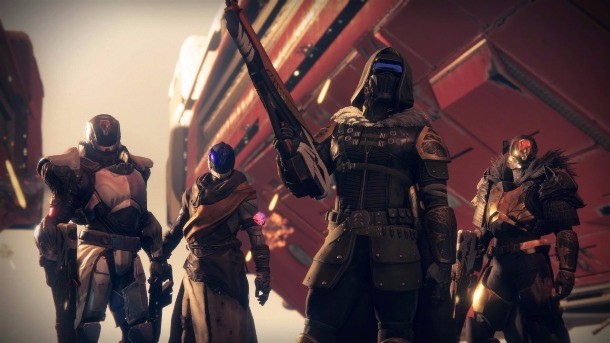
Destiny 2 released in early September, and its player community has spent countless hours in the weeks since then plumbing its solo, cooperative, and competitive challenges. With the PC version about to release, I wanted to take an in-depth look at the console game as it exists for its most devoted players, and examine the good, the bad, and the questions that remain as we head into the game's future.
Some clarifications are in order.
First, this isn't a second review. My original review stands as an evaluation of the game as it will be experienced by many players – that is, a person who dives in and navigates their way through the story missions, explores the competitive options, and begins to dig into the wealth of public events, strikes, and maybe even a few runs at the raid. That's a flashbulb of the game experience after my first 60-80 hours or so of play, and if you still haven't tried Destiny 2, that article best speaks to the excitement and fun you can expect to find over what might be many weeks of play. To sum it up for those who prefer not to click over, I found the first many dozen hours of Destiny 2 to be a thrilling adventure, and one that was well worth exploring for both veteran Guardians and newcomers.
Second, this article bills itself as a season one report card. I'm aware that Destiny 2's first season is still underway, and it's possible that Bungie may still have some additional content for players to explore. If such content arises, I'll update these impressions. However, with the recent release of the prestige version of the Leviathan raid, the impending launch of the PC version, and many clans having now had the chance to fully level up their season-one clan banner to completion, I thought this would be a good time to take a step back and explore what I’ve seen so far.
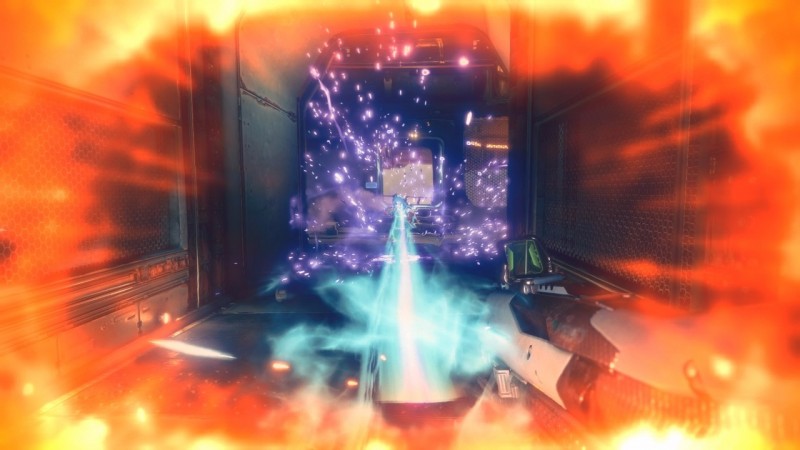
Flash And Thunder
Chart the course of my time with Destiny 2, and a lightning-and-thunder analogy feels increasingly apt. Destiny 2 makes a remarkable first impression, with strong storytelling, dozens of new activities, lots of desirable objects to collect, and a stunning art design for characters, worlds, and action that can’t help but get the blood pumping. The thunder that follows rings for a long while, but echoes the same beats that diminish in power with the passage of time. Many of the same things that feel exciting in the early hours fade in impact as the game wears on. Take the token economy; at first, this investment system provides consistent rewards and meaningful advancement. But as it echoes into the later game, the same system loses its punch, with too much randomness and repetition, and a diminishing of the rewards attained during activities, divorcing the reward from the excitement of a victory over a strike or raid boss, or a Crucible match victory.
The picture that emerges is one of two games. Destiny 2 begins with an incredibly rich palette of experiences for many riveting hours of adventure, and that includes many of the activities that emerge after the campaign’s completion, including the exotic weapon quests, early runs at the raid, and lots of fun cooperative exploration of planetary destinations with friends. The second game emerges, not all at once, but slowly over the hours that follow. Rather than open the door on new complexities, secrets, or insights into the fiction, Destiny 2 offers few reasons to invest for the long term, demanding that its players concoct those reasons for themselves.
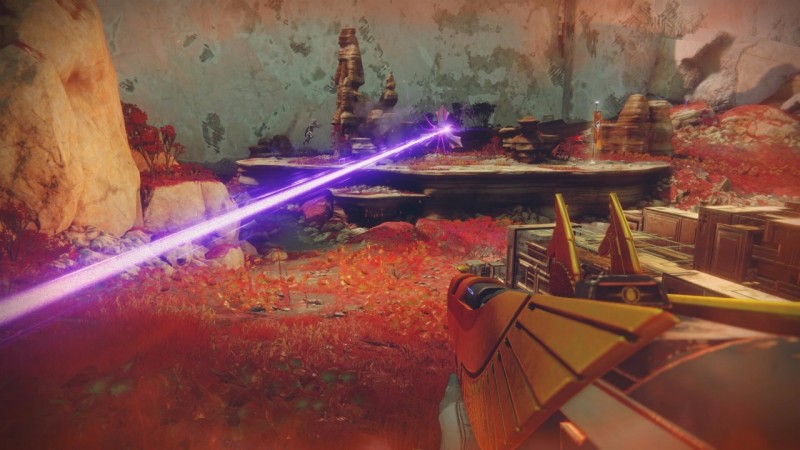
Origin Story
Bungie made a daring decision when it chose to reset progress, destinations, and several in-game systems with Destiny 2. The choice invites constant comparisons to the original game for those of us who played it the most, some flattering, and some less so.
Destiny 2 onboards players far better than its predecessor. For those of us who have played both games a lot, it’s easy to forget the millions of players who found Destiny 2 more welcoming and understandable. That’s no small feat.
Destiny 2 also does a far better job, both in the short and long term, of making its destination planets compelling locations for exploration and battle. A map with clearly marked public events and fast-travel points is a huge quality-of-life improvement over the original game’s sometimes barren playspaces. Plus, the art and geography of these locales is consistently breathtaking; I have a hard time choosing a favorite, even after hundreds of hours of play.
These changes to destination organization and structure only come because we’ve left behind the old structure from the original Destiny, but they come at a heavy cost. After all this time exploring the new Destiny 2 spaces, it feels strange that I’m still locked away from the content and locations in which I played for three years in the original game. Going to Nessus or Io feels no fresher at this point than it might be if I could fly into Mars or the Dreadnaught. In an ongoing story akin to many MMOs, I feel oddly contained having lost the ability to return to those old haunts. Conceptually, the universe has contracted, and that’s not a sensation I love in a game about being a hero of humanity reclaiming our birthright across the solar system.
To put it another way, I understand intellectually why Destiny 2 needed to be a clean break from the original Destiny and all its maps, modes, and activities; it allows game systems, technical constraints, and other game elements to reset. But, if I’m honest, there are times in recent weeks that I’ve longed for the increased variety that might come from making a return visit to older locales, and seeing how they fared in the wake of the Red War.
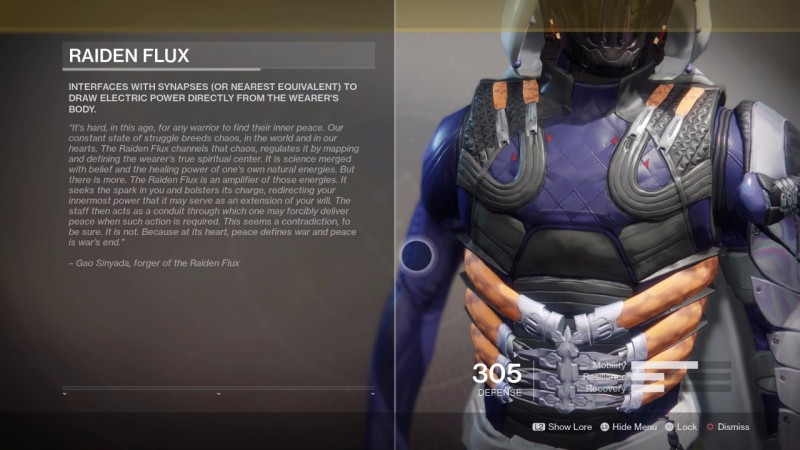
Enigma’s Draw
In my review for Destiny 2, I called out an absence of mystery and magic in the storytelling of Destiny 2, and that sensation has been reinforced in the intervening weeks. Destiny 2 does a better job than its predecessor of contextualizing its destinations and introducing its core characters, but it misses something important through the abandonment of the Grimoire, and its unwillingness to include secrets and mystery that characterized that earlier game.
I was never one of the players crying out about the stupidity of the Grimoire; instead, I was one of the dorks regularly pouring over those cards and all their weird sci-fi goodness, and transplanting them over into pdfs to read at my leisure. Even so, I certainly sympathized with the desire to see more of that content in-game. Bungie was wise to move away from using the web-based Grimoire system a second time, but the absence of an equally rich repository in-game leaves many things without an explanation. Lore write-ups on some equipment and the occasional scannable object for your Ghost just don't measure up. What is the Leviathan? How does Devrim Kay know Hawthorne? What hidden secrets on Io make it such a sacred place for Ikora and the warlocks? And for players who never played the original Destiny, who are these enemies I’m fighting (other than the Cabal)? What’s the deal with the Hive, Vex, and Fallen? Veterans may know the answer, but Destiny 2 fails to clarify those details for newcomers.
Similarly, Destiny 2 seems reticent to embrace some of the sense of secrecy and even confusion that was so appealing before, as typified by the adventures experienced in The Taken King expansion. Where is the community moment of finding the secret Black Spindle quest hidden away in a heroic story mission? Or the secret chest in the Dreadnaught that requires that you first bathe in the scent of the Hive? Or the binary puzzle of Rise of Iron’s Outbreak Prime puzzle? These moments united the community, and like a secret decoder ring, helped players feel like they were in on something special and magical.
Next Page: The value of consistent events, and the frustration of microtransactions

Perseverance
Amid various ups and downs about my time with Destiny 2, there is one arena in which Bungie has been consistent and responsive to fan desire: the nearly constant introduction of new events and activities to explore. While most of these activities aren’t yet at their best as far as implementation, I’m enormously grateful that the developer has adopted such an aggressive pace for its smaller content patches, providing new and unique experiences every week or two during the first several weeks of play.
Regular calendar events communicate a passage of time within the game universe. When Xur arrives each weekend, it becomes a ritual for players to check his wares. The return of the Iron Banner offers a chance to double down on a week of Crucible play. The new Faction Rallies event turns players’ attention toward these strange organizations, and offers a limited time frame to collect some different items.
I call out those events in particular, because they also typify the need for improvement in content roll-outs. Xur’s inventory repeats too frequently. Iron Banner’s reward structure is flawed and overly random. Faction rally activities demand an unentertaining loop for most efficient farming. These are big issues that Bungie needs to address.
Nonetheless, it’s the presence of these events on such a frequent basis that encourages me. I also think that Destiny 2’s milestone system is a smart way to provide clear tasks for all players every week; I’d like to see more variety in these milestones, but their presence is welcome.
I’m more lukewarm on the new challenges that pop up in various activities, apparently as an alternative to the old bounty system of the original Destiny. The inability to learn about challenges until you’ve flown into the activity is very odd, especially in Crucible play, where your whole attention once you enter a match should be on teamwork and smart play. The passive nature of challenges also often feels less like a proactive task, and more like something that just happens in the background. I often complete challenges without even knowing I was attempting them, which provides little in the way of a sense of accomplishment.
I was somewhat skeptical about clans in the first days of the game, but over time I think the system is a net positive, and deserves praise. I’ve found that my own clan is excited by the idea of leveling up the group, gaining new perks as we all play together. And by providing rewards for the whole clan when any small part of the clan completes a marquee activity (like the raid or Trials), it helps everyone feel invested in the group’s success and victories.
Meanwhile, the guided game functionality, much touted ahead of launch, feels like it has missed the mark. The idea is to bring different types of players and clans together, but I simply don’t see the system in use very much, and I think a lot of players are still pretty fuzzy about how it even works. The groups that players can find often feel as haphazard as those you would have found with matchmaking, but the process can take much longer. The system launched into a beta functionality after the game released, and never seems to have coalesced into a meaningful way to bring disparate play groups together.
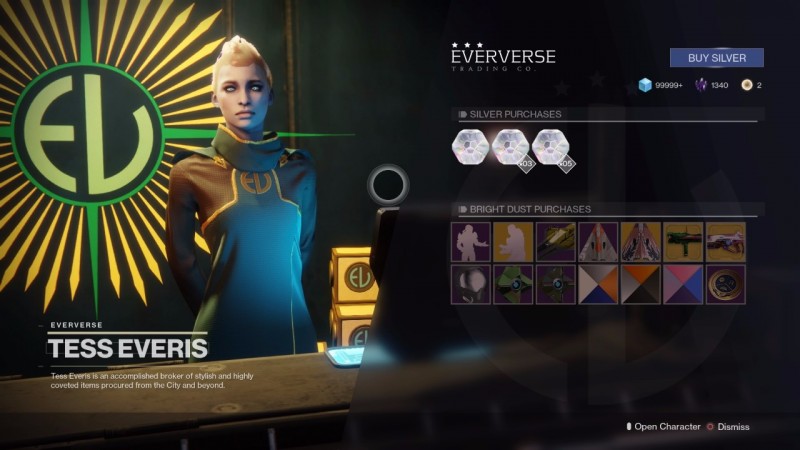
Sweet Business
Microtransactions have been a hot topic of late, not just in the Destiny community, but across the gaming spectrum. I’ll certainly confess to some strong feelings on the subject.
I won’t belabor the subject as it relates to Destiny 2, other than to say that more hours with the game have only increased my distaste for the Eververse, its “deals,” and the way a lot of the game’s fun rewards, including ships, emotes, sparrows, exotic weapon ornaments, and some of the cooler-looking armor sets, are locked behind this system. The pace and rarity of drops from earning Bright Engrams during in-game play succeeds less in providing the desired items, and more in forcing players to regularly drop by the Eververse store so they see what they’re missing.
To frame it another way, all those cool items would do a lot more for the game’s replayability if they were built into the broader activity rewards, and I’d be far more eager to want to collect them all.
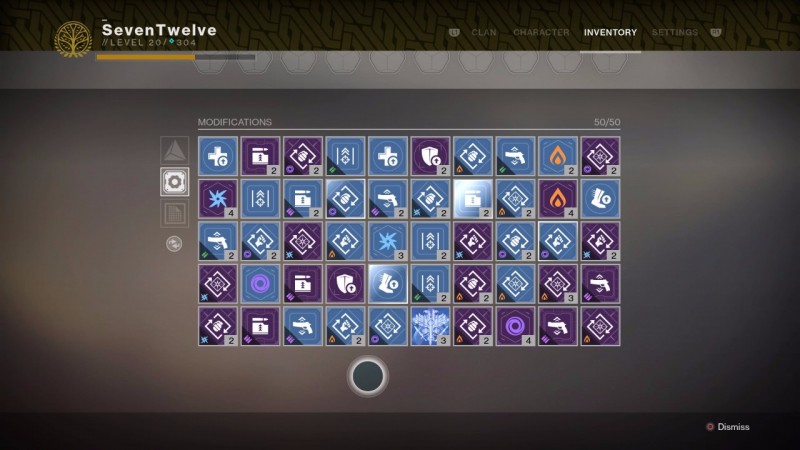
The Number
Inventory management, vault storage limits, and the broader collection experience are all arenas that need work in Destiny 2, and the degree to which that’s a dilemma for you is directly proportional to your time played. The more you play, the more you feel like those systems need to be overhauled.
Speaking for myself, I spend an inordinate amount of time with 199 vault slots filled (with one slot open so I can transfer items through the vault from character to character), and most of my character inventory filled as well. For me, time playing Destiny is largely about collecting and gathering rewards, and I hate being forced to delete unique items after they’re acquired. My post office box is regularly threatening to overflow, and the process of sifting through to find what’s new and worth keeping is tedious. I own way more mods and shaders than I have room for in my inventory, so those further exacerbate my vault problems.
Managing this aspect of the game wasn’t an enjoyable activity in the original Destiny, and the same holds true with the sequel. I’d really love to hear whether Bungie plans to invest in changing the structure of collecting in-game, perhaps through a more robust group of Collections for legendary armor and weapons, and faster, smarter tools for organization. For more on my thoughts, check out this dedicated article about the collection and vault management experience in Destiny 2.
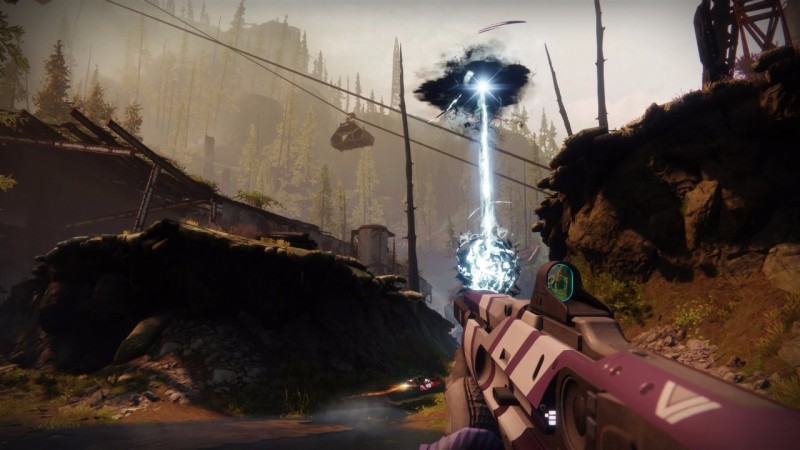
Unspoken Promise
Games like Destiny 2 function on a fairly straightforward system of challenges balanced against commensurate rewards. That promise is broken when the game demands a certain degree of effort, but doesn’t balance it with meaningful loot, progression, or story reveals.
Like so many aspects of Destiny 2, it’s a dynamic that works quite well in the first several dozen hours of play. Unfortunately, the cyclical experience of weekly resets, high-level events, and post-campaign experiences are poorly incentivized. There’s a mismatch between the effort that is put out and the sense of reward that is gained.
Let’s make some distinctions here. Any loot-based game, by its nature, demands a slowing curve of rewards the further in you go. That’s natural, and expected. Destiny 2’s dilemma isn’t that it’s offering too few rewards to late-game players, but that the winnings gained don’t feel like they are…rewards. Moreover, many otherwise good activities are not appropriately incentivized because the related completion drops simply aren’t worth it.
I briefly alluded to this early in the article, but one of the problems here is the randomness of the token economy. High-level activities like Iron Banner and the Leviathan Raid rely on tokens for most of the rewards, but those tokens lead to random rewards. I completed many runs of the raid in pursuit of the Titan arms, but token drops instead gave me five different copies of the same auto rifle. After 40+ Iron Banner package turn-ins, I finally gave up on that Hunter chest piece I had wanted since the beginning of the week. I’d love to have more determinative rewards in place – even if they cost far more than the random turn-in options. In recent public statements, Bungie has indicated that we may be getting exactly that in subsequent events – a decision I applaud.
The second problem is that so many of the rewards are separated from the experience that gets you that reward. In the original Destiny, I used to feel my heart beat faster as I waited after defeating a Nightfall boss to see my team’s loot, and commiserate with my friends about what we got. That experience for many activities has moved to the Tower, where players split off to their own tasks (if they go to the Tower together at all). Divorced from the thrill of the fight, I get an item drop, and oftentimes, I have no one to celebrate with or complain to. It’s just not as exciting.
Finally, Destiny 2 features several excellent play experiences in which the reward simply isn’t good enough to justify the playthrough. Adventures are really fun story experiences that expand players’ understanding of a location and its characters, but it’s far easier to pop into a quick public event for the same (or better) rewards. Strikes are also chronically underused; these great cooperative adventures offer pitched battles, and I think Destiny 2’s strikes are some of the most engaging that Bungie has created. But there’s little reason to play them, because the rewards are so lackluster. Perhaps most damning, the recent release of the prestige version of the raid offers frankly pathetic rewards when compared with previous hard mode versions of raids. I’ve played with many of the same players for over three years, and last week’s prestige raid run was the first time that many players in those groups straight up abandoned a first run at completion. In two separate groups, I heard the same sentiment: “Why are we doing this again? What do we get?”
Next Page: The good and bad of a new Crucible, and the challenge of community engagement

Bad News
Destiny 2 is a big and complex game. Bungie deserves enormous credit for a relatively smooth technical launch, and for avoiding some of the worst instances of network problems and lag, activity cheeses, and other problems that plagued the original Destiny.
Unfortunately, Destiny 2 has faced its own new share of problems, many of which have cropped up in the weeks after launch. An insidious bug crashed the game when flying into the social space for weeks (on one night, I crashed five times), before Bungie finally implemented a fix. The nightfall strike has had significant bugs numerous times, frequently necessitating Bungie to reset to a different strike for the week to provide a quality playthrough. Weekend Trials events have seen similar exploits and bugs, most recently resulting in a two-week cancellation of the event. The prestige raid had to be delayed a week to attempt to address an exploit. I could go on.
To the team’s credit, many of the problems that have cropped up are tagged for fixes in relatively short order. I can only imagine how hard it must be to track down and squash some of these bugs while a vocal community is shouting their frustration from the rafters. However, any way you cut it, these technical snafus are hurting the ongoing game, and I hope that moving forward, the team at Bungie can find some ways to resolve more of these issues before they go into the live game.
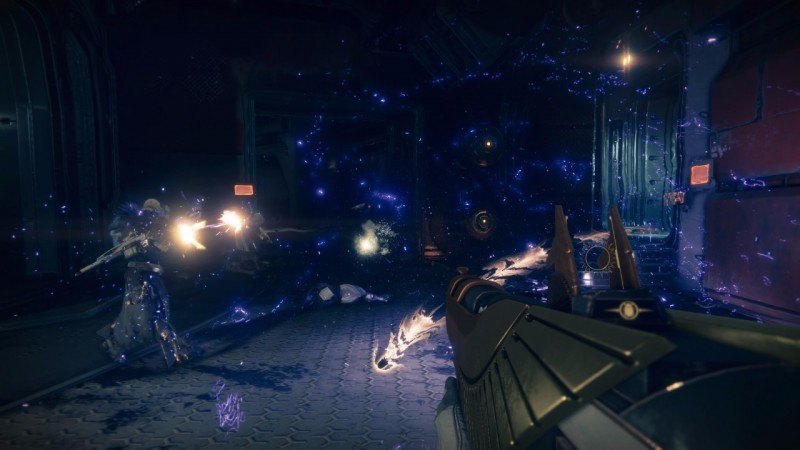
Mob Justice
The Crucible experience in Destiny 2 is a complicated topic. Bungie implemented some dramatic changes to its PvP game for Destiny 2. Those changes undoubtedly make the game more welcoming to newcomers, and at times, the resulting competitions are pitched and electrifying. However, those same matches, and how you get into them, have led to problems that alienate some of the Crucible’s most ardent fans.
I love playing in the Crucible, and it’s not unusual for me to spend several hours there every week. But I’ll be the first to admit that I am rarely the guy ruling the leaderboards. Because of that, the move to teamwork-focused PvP has a lot of benefits for a player like me, as I feel like I can find success by playing smart and using good positioning on the field. However, the focus on team play has had an unfortunate consequence as the weeks have worn on. In many match types, the key to victory has become very conservative play, sticking side by side with most of your team, team-shooting from corners, and rarely springing for the crazy risks that so often defined play in the original Destiny.
The original Destiny had a bunch of different playlists that someone could enjoy, making it easy to home in on your favorite style of play. That also undoubtedly led to challenges in implementing good matchmaking. In Destiny 2, during most of any given week, players have only two playlist options. Quickplay and competitive playlists may broaden the pool of potential players for each, but it creates big problems. Some players have taken to simply dropping out of match types they don’t like. Other players tough it out, but are frustrated by the inability to have more choice in their playstyle.
The move to exclusively four-person teams likely has some benefits in terms of matchmaking and connections, but it also makes too many of the match types feel too similar. I used to love the different feel of a big chaotic match of Control, then dropping into a small team Skirmish game, before trying my hand at some free-for-all Rumble action. That constantly switching dynamic is now gone in Destiny 2. Moreover, I miss the symmetry I used to find between PvE and PvP groups, where a three-person strike team could flow naturally into a three-person Crucible team, or my six-person raid group could launch off into some PvP to blow off some steam after some hard-fought runs at Atheon, Crota, Oryx, or Aksis.
Finally, anyone who has been playing a lot of the new Crucible knows that the “meta” feels especially narrow at the moment. Perhaps it’s partially the fault of a community that is too eager to min/max their experience, but it seems more likely that the balance between weapons right now needs some work. The dominance of just a few weapons is frustrating, and I’d love to see other weapons get the boost they need to feel competitive.
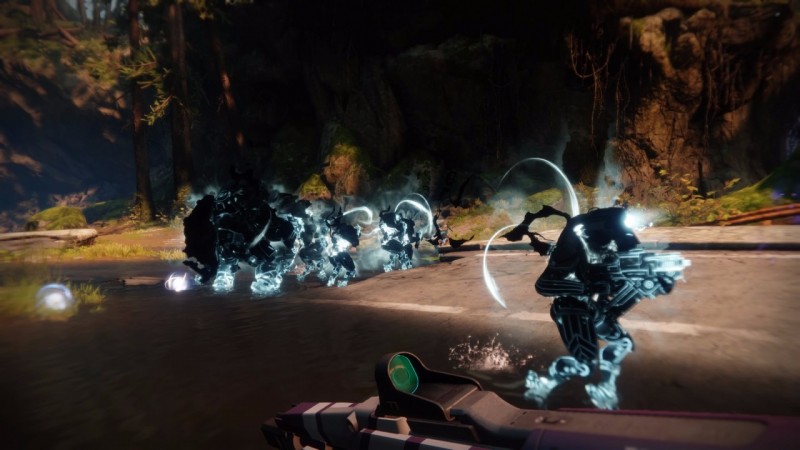
Complex Solution
I just touched on this a bit when speaking about the Crucible, but Destiny 2’s sandbox experience has some challenges to surmount with exotics, weapons, and class balance.
Whether it’s the pulse grenades that seem to dominate the fight, auto rifles like Uriel’s Gift (and its kin) outshooting even scout rifles at a distance, hand cannons that often don’t feel like they’re worth using, or the Hunter dodge class ability simply not having the same utility for most players as the Warlock rift or Titan barrier has, there are a lot of things to nitpick. It’s natural for a game as complex as Destiny 2 to struggle in its early months to find the right balance for high-level play.
Nonetheless, there are broader issues in the sandbox that are emerging over time that concern me more. First, while many of the new exotics look amazing (both weapons and armor), I’ve found that many of them simply don’t have the punch I’d like to see in how they impact play. In my mind, an exotic item doesn’t necessarily need to be profoundly more powerful than its legendary counterparts, but it should change the way I play in a meaningful way. A few standouts do that, like the Warlock Winter’s Guile gloves, or the Coldheart trace rifle. But many simply feel a bit underwhelming, and lack that cool factor that often set apart the exotics in the first game.
Second, the selection of legendary weapons this time around lack the same collectability and variety that many Destiny players have come to expect. It’s hard to fault the initial design decision here; any given named weapon is the same as any other, making it easier to keep track of what you have, and what’s worth getting excited about, especially for newcomers to the game. However, that simplification also means that repeat legendary weapons hold virtually no interest, especially after you’ve managed to hit power cap. It all feeds into a frustrating cycle; decrypt a disappointing weapon or armor piece that you already have, retrieve it from the postmaster (because your inventory for that slot is probably full), and then dismantle it, getting a currency that you probably don’t need.
Unique event gear also feels ho-hum. Often, previous raid gear, Trials gear, or even Iron Banner gear felt especially impactful and unique. For instance, certain raid armor might give a boost to a particular encounter in the related raid. The absence of these perks this time around makes most event gear desirable as a cosmetic item, but not necessarily as an item that will change the play experience.
A similar dilemma comes into play with the new subclasses. Sure, they are certainly easier to grasp this time around, but I miss the fun of tweaking individual options on the fly to better suit a situation. At least some of that variety has now been offloaded to the armor mod system, but given that there’s a cost every time you use a mod, and you might not want to lose the previous mod that’s in place, experimentation gets discouraged.
To frame all of this in a different way: Weapon and class balance in Destiny 2 still needs some work, but I’m confident that Bungie can continue to tweak that experience, as they always have. The dilemma of too little variety and novelty in the sandbox is a bigger challenge to confront, and one that I hope can improve significantly, as the effect on broad replayability could be profound.
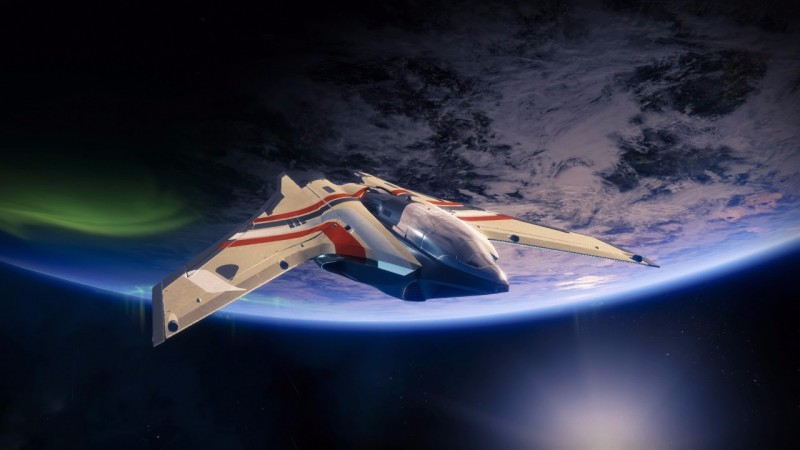
Critical Sass
The developers at Bungie are fond of saying that they are nothing without their community, and they are right. Destiny and Destiny 2 are games that live or die by engagement with the community of players, and how they choose to play, discuss, and interact with the game.
And so, in this look at the game at it stands right now, I’d be remiss to not take a moment to discuss that aspect of the experience.
Put simply, there are some angry players out there right now. Having followed the Destiny community throughout its life (and having been a part of it), it’s safe to say that Destiny 2 was met with mostly broad acclaim in its first couple of weeks, and that recent weeks have seen a shocking disdain from many of those same players. The level of vitriol has, at times, bordered on personal attacks against the very developers who are crafting the game we all play so much. That’s disappointing, as I’ve often found the Destiny community to be constructive and measured in its responses to Bungie, at least in comparison with many gaming communities. Even as that community continues to voice frustration or critique, I hope there’s a move back from the precipice of deep resentment and anger that seems to be percolating for so many players.
On the other side, Bungie needs to do a better job communicating about its plans as it moves forward. Many of the frustrations aired by the community arise because they feel blindsided by decisions, small and large, that affect their free time and play experience. As a small example, in the first week that Trials of the Nine launched, players didn’t know they had to complete the Call to Arms milestone before they could play Trials with their friends. That’s no fun. To cite another instance, if you delay the launch of a raid just a couple of days before it launches, no matter the reason, you suddenly have players who might have taken time off of work who are suddenly left in the lurch.
Managing a live and evolving game is enormously challenging, but I’d love to see Bungie offer clearer calendars for its content plans, with succinctly stated dates and times set well ahead of time. Communicate clearly about significant changes to game systems ahead of a content launch, whether that’s the nature of progression and leveling, or expected shifts to event roll-outs. Explain to longtime players the reasoning behind a decision that changes the game; knowing the “why” makes it a lot easier to stomach the “what.” Have open conversations and interviews with online content creators, journalists, and directly with the community, in which concepts and adjustments to the game can be contextualized.
I think we all have the impulse to turtle up and get quiet when we’re being attacked or criticized. But in the case of a game like Destiny 2, that impulse should be resisted; when criticism is leveled, I honestly feel Bungie would be better off in those moments increasing its communication efforts, justifying design decisions, and acknowledging problems or mistakes, rather than remaining silent.

The Forward Path
If you’re still with me, it’s because you, like me, have a lot invested in the Destiny universe. One of the reasons that Destiny 2 has fostered so much debate is because it’s a game that many want to see succeed.
Destiny 2 has a lot of success to be happy about. Even after several hundred hours in the game, I still have fun diving in, shooting some aliens, staring at the gorgeous backdrops, hearing some epic music, and chatting with my buddies. Destiny 2’s shooting experience remains second-to-none in the FPS gaming world, and no other game on the market offers the same quality mix of RPG-style investment, MMO-style multiplayer, and shooter-style action.
For longtime fans, the temptation is to want Destiny 2 to be like the original. I certainly feel that way sometimes. But there’s something to be said for letting Destiny 2 find its own identity independent of its predecessor, and it still has the opportunity to do that.
The core action, shooting, and universe of Destiny 2 is amazing, and as the game wraps up its first major outflow of content, I find myself thinking a lot about the game’s future expansions. I’m eager to see Bungie continue to evolve the game, as most of the significant criticisms that Destiny 2 has weathered could be addressed over time. Destiny 2’s endgame isn’t where it needs to be right now, but there is a path forward. Accessibility and ease-of-play don’t always have to be the enemy of replayability and complexity, and with some brave design choices, Destiny 2 is a game that could prove that case in the coming months.









